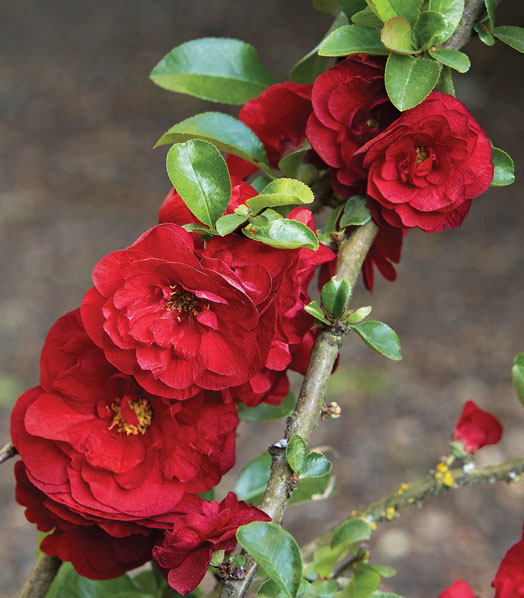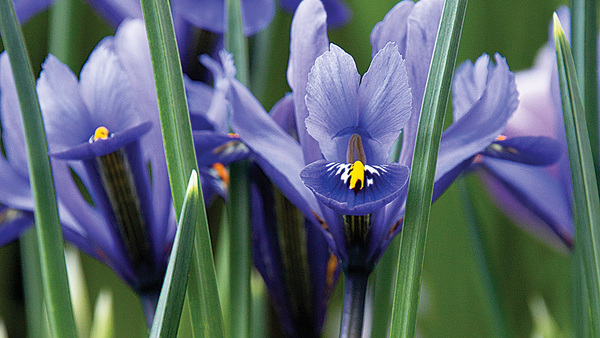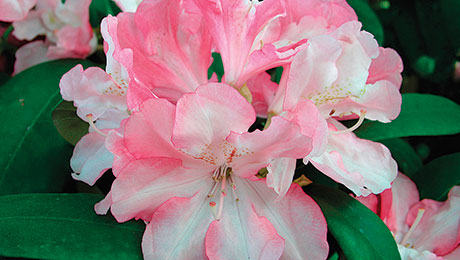
If your first few trips to the nursery can be overwhelming and chaotic, check out our plant recommendations for spring color in your region. There’s no doubt that these spring flowers will cure the winter blues.
1. Hinckley’s golden columbine

Aquilegia chrysantha var. hinckleyana
Zones: 5–8
Size: 2 to 3 feet tall and wide
Conditions: Partial to full shade; moist, well-drained soil
Native range: Texas
One of the best ways to welcome spring is with the bright yellow shooting stars of Hinckley’s golden columbine. Early each year, beautiful little yellow spurred flowers dance above a mound of delicate leaves. When in bloom, this plant can reach up to 3 feet in height, making it perfect for floating above other shade lovers such as ferns and hellebores. Columbines like this one resent clay soils, which increase the chance of rot. After the bloom, the leaves provide an attractive mound of green texture to the bed. In warmer climates, this is considered an attractive evergreen for shady woodland gardens.
2. ‘Neon Lights’ foam flower

Tiarella ‘Neon Lights’
Zones: 4–9
Size: 16 inches tall and 20 inches wide
Conditions: Partial to full shade; moist, rich, well-drained soil
Native range: North American hybrid
‘Neon Lights’ foam flower provides a double dose of beauty. The early spring leaves are stunning, with deeply lobed contrasting edges of neon green and deep, merlot-colored centers. Later in spring, flower stems covered with soft pink buds open into bright white, foamy racemes above the multicolored leaves. The bloom time can last up to six weeks, making it a perfect complement to evergreens and early spring-blooming perennials.
3. Double Take Scarlet™ quince

Chaenomeles speciosa ‘Scarlet Storm’
Zones: 5–9
Size: 3 to 4 feet tall and wide
Conditions: Full sun to partial shade; well-drained soil
Native range: China
This striking harbinger of spring always brings a smile to my face after the depressing brown tones of late winter. The dark red blooms are not the only benefit of Double Take Scarlet™ quince, however. The compact size, fruitlessness, and drought and heat tolerance make it a versatile plant for nearly any garden. It looks amazing in bloom whether planted in mass or as an accent in a border. Find a location with at least six hours of sunlight, lightly prune to shape after the spring bloom, and this plant will reward you with even more stunning scarlet camellia-type flowers the following spring.
4. Snowcap® Indian hawthorn

Rhaphiolepis × delacourii ‘Corleyscourii’
Zones: 7–10
Size: 4 feet tall and wide
Conditions: Full sun to partial shade; moist, well-drained soil
Native range: Eastern Australian hybrid
Beautiful, lightly fragrant clusters of white blooms jump out from the dark green, leathery leaves of the Snowcap® Indian hawthorn in midspring. With a naturally round shape and compact size, this shrub can easily be used as an evergreen presence in foundation plantings, or as an accent in borders. As a bonus, the leaves turn a beautiful dark burgundy red in fall. It is generally listed as hardy to Zone 7; however, abnormal dips in winter temperatures can damage some hawthorns. In Zone 7, I prefer to use it against a building foundation for protection or on the south side of a border planting to prevent winter damage.
—Michelle Medlock is a landscape designer at Lawnovations in Tulsa, Oklahoma.

















Comments
Log in or create an account to post a comment.
Sign up Log in